Harry Nedou and Controversial Holkar Jewelry Heist
Written by : Amita Roy
Dated: January 29,2018
Share
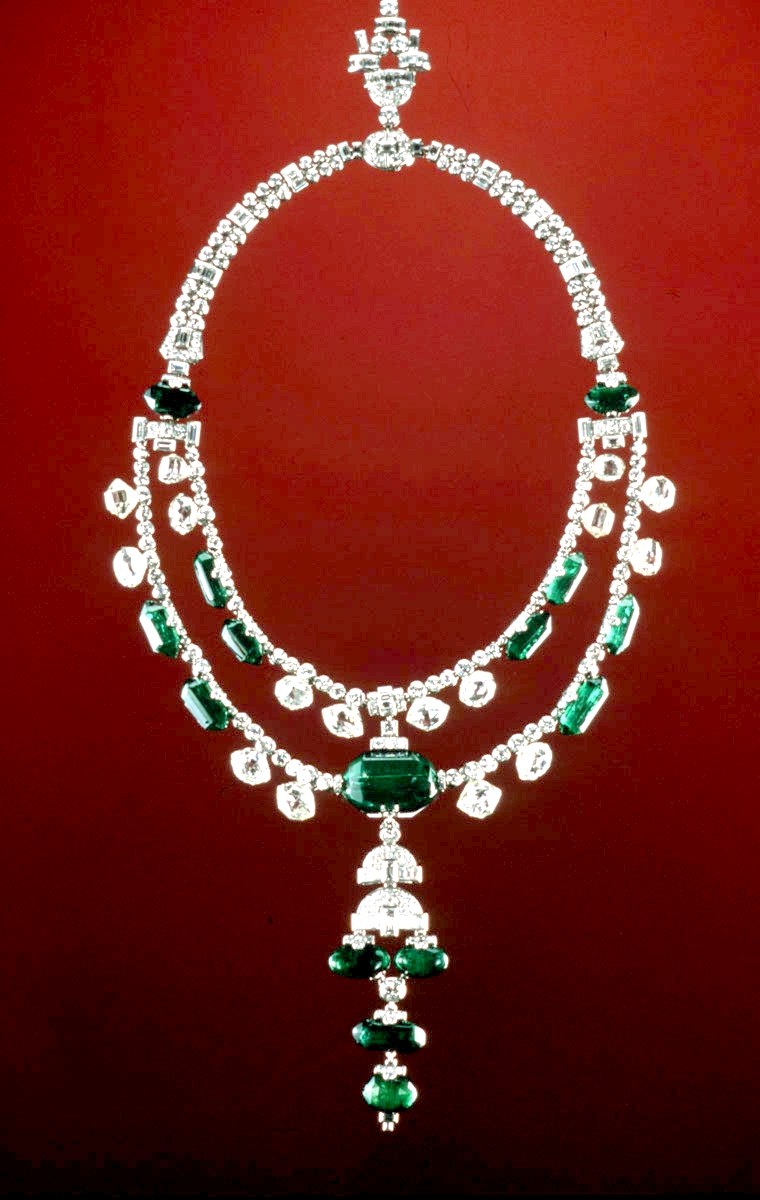
Spanish Inquisition necklace bought by Harry Winston. Image - Smithsonian Institute
NOVEMBER, 1949
An American hospital fund raising pamphlet from New York reaches the hands of Ex-Maharaja of Indore Tukojirao Holkar. The pamphlet gives a description of royal jewels lent by the famed jeweler from New York, Harry Winston to Hospital which will be put on public display in a jewelry exhibition exclusively for the charity fund raiser for a hospital organized by some high society women. Maharaja Tukoji Rao Holkar calls the Embassy of India in Washington D.C. immediately at that time and conveys the information about the pamphlet. But why this pamphlet is so important?! The pamphlet contains description of 3 particular famed Indore jewels –
1. Dudley Necklace
2. Inquisition Necklace
3. Indore Pearshaped
Maharaja Tukojirao Holkar informs that these 3 particular jewels are his private jewels which he left at the Rampur Kothi (Lal Bagh Palace) at the time of his abdication in 1926.
Smt. Viajylakshmi Pandit , the then Ambassador to India in U.S.A. inform this to her brother, Jawaharlal Nehru, the then Prime Minister of India. From here, an unusually new and unexpected story unfolds.
.jpg)
Painting of Maharaja Yeshwantrao Holkar by French painter Bernard Boutet De Monvel of 1929 displaying the famous pair of Indore Pearshaped diamonds. Image - Sothebys
-2.jpg)
Fund raiser pamphlet acknowledging Harry Winston as the lender of the jewels for the exhibition.
-3(1).jpg)
Dudley Necklace as in the fund raiser pamphlet.
-4.jpg)
Description of the Dudley necklace in the fund raiser pamphlet.
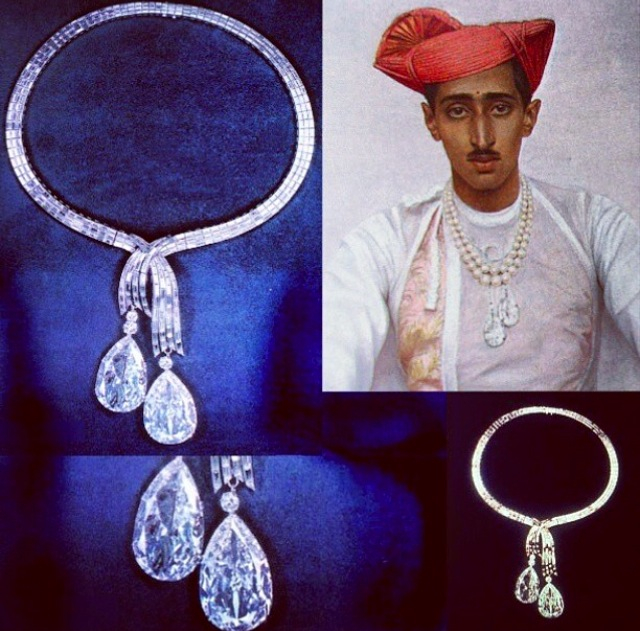 Indore Pearshaped diamonds.
Indore Pearshaped diamonds.
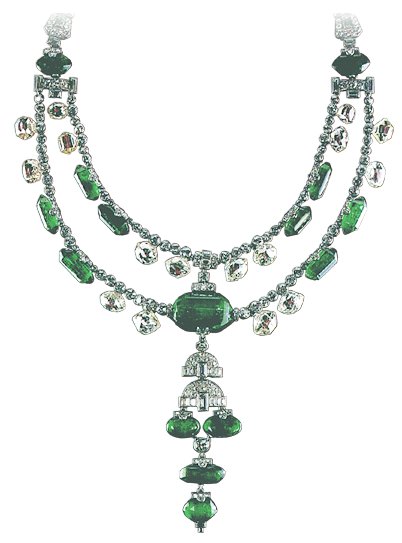
Inquisition Necklace
-5(2).jpg)
Description of the Inquisition necklace in the fund raiser pamphlet
Flashback to 1948, the Joint Secretary to Ministry of States, Govt. of India, M. K. Kripalani visited the newly erstwhile princely state of Indore which was by now an ordinary city, on his official work with Madhya Bharat State Govt, somehow meets a stranger, the Accountant General of Indore princely state, Mr. V. N. Singh. Singh informs Kripalani that valuable articles including State Jewelry, other Toshakhana articles, state furniture, were being removed from their present position to unknown places and records thereof were destroyed. Though this was done by the His Highness’s household department, but the local Ministers were also interested in the business but Singh being an auditor of the princely state, it was his duty to exonerate himself of the duty as well as safeguard the interest of the state. This information he passed to Kripalani in personal capacity. He requested Kripalani to also appoint a Govt officer to investigate the matter and observe the situation.
After leaving Indore, Kripalani reached New Delhi and communicated this situation to C. S. Venkatachar who was the Regional Commissioner for Central India. The correspondence that took place between Mr Kripalani and Mr Venkatachar clearly states that Govt of India had very few papers on the status of the Holkar jewelry. He was lucky to meet Mr V. N. Singh who personally gave the information of the removal of State Jewels. Kripalani requested Venkatachar to take up this matter with the then Maharaja of Indore, Yeshwantrao Holkar.
Venkatachar conveyed this to S. Narayanaswamy who was the then Under Secretary in the Ministry of States and asked him to find out about the status of Indore jewels from 1926 onwards when Maharaja Tukojirao Holkar abdicated his throne in favor of his son Yeshwantrao. Narayanswamy inquired with the High Commission for UK in New Delhi about the files which contained the terms and conditions accepted by Maharaja Tukojirao Holkar in 1926 and any information about the jewelry.

Maharaja Tukojirao Holkar (1890-1978) who abducted his throne in favor of his only son Yeshwantrao Holkar in 1926. Photo - Wikimedia Commons
The British High Commissioner sent the files related to Tukojirao Holkar’s abdication from the Commonwealth Office. The files provided detailed information about the terms and conditions accepted by Maharaja Tukojirao Holkar, the status of the Indore royal jewels and its valuation in 1926. The file stated clearly that for the first time in 1926 and in the history of the erstwhile princely state of Indore, jewelry present in Huzur Jawahirkhana or state treasury was divided into State Jewels and Private Jewels. There was a total of 2027 pieces of jewelry which included of gold and silver articles worth Rs 65 lakhs as of 1926. Out of these, Maharaja Tukojirao Holkar owned Rs 30 lakhs worth of jewelry which was his private jewelry. The British Govt present in India allowed Tukojirao to take with him only Rs 5 lakhs worth of jewelry to Europe. Tukojirao Holkar deposited the rest of the Rs 25 lakhs worth of his private jewelry at Rampur Kothi which was Lal Bagh Palace. Later, beside the British Indian files, the correspondence records between Maharaja Tukojirao Holkar and his son Maharaja Yeshwantrao Holkar clearly states tension between father and son on the jewelry issue as Maharaja Yeshwantrao Holkar never returned the Rs 25 lakhs worth of private jewelry to his father which he left behind before leaving for Europe in 1926.
In 1948, when the princely states signed the Instrument of Accession with Govt. of India, they had to submit a list of jewels, both former State Jewels and Private Jewels. As of 1948, Maharaja Yeshwantrao Holkar was in possession of the private jewels of his father Tukojirao Holkar which he had previously left behind in 1926. Seeing Indore becoming a part of independent Govt of India, Maharaja Tukojirao Holkar and his 3rd wife contacted Govt. of India to mediate between him and his son Yeshwantrao to get back his private jewels which he left behind at Rampur Kothi in 1926. The correspondence between different ministries and officials within Govt. of India clearly showed that Indian Govt was confused about the status of these private jewels. Though ex-Maharaja Tukojirao Holkar and his 2 wives received pensions from the Indore royal state treasury, and subsequently, this responsibility was now transferred to the Indian Govt, but legally it was becoming very difficult to decide who was the legitimate owner of these private jewels; Govt of India who considered these jewels as a national heritage, or Maharaja Yeshwantrao Holkar or his father ex-Maharaja Tukojirao.
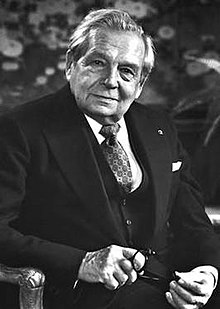
Harry Winston.Source - Wikimedia Commons
Fast Forward to late 1949, the complaint made by Ex-Maharaja Tukojirao Holkar was investigated by the Govt. of India where he claimed that 3 of his private jewels which were in the custody of Indore Huzur Jawahirkhana under his son had made its way to New York. V. P. Menon, the Secretary for Ministry of States directly started correspondence on the issue with Maharaja of Indore Yeshwantrao Holkar. Coming to New York, Holkar family had a very strong connection with U.S.A. on a personal level. Ex-Maharaja Tukojirao Holkar married an American lady from Seattle who was his third wife Maharani Sharmishthabai Holkar. Similarly, Maharaja Yeshwantrao Holkar was always fascinated by the American culture and had invested in multiple estates in U.S.A. His second and third wives were also Americans. Due to strong inter personal connections in the Holkar family with U.S.A. V. P. Menon knew that Maharaja Yeshwantrao Holkar may be certainly aware about the incident or deliberately hiding the fact about the jewels.
Keeping the news reported by V.N. Singh and Tukojirao Holkar in mind, V. P. Menon understood that this is certainly an insider job where Maharaja Yeshwantrao Holkar has played a major role and pretending with the Govt of India that he may not be aware of. Maharaja Yeshwantrao Holkar was asked about the 3 jewels - Dudley Necklace, Inquisition Necklace and Indore Pearshaped that they are in the occupation of famed New York jeweler Harry Winston; a question that HH did not expect. Immediately, Maharaja Yeshwantrao Holkar sends a letter to Harry Winston in New York that he wants to buy back these 3 particular Indore jewels in the same price that he sold to Harry Winston as Indian Govt wants HH to keep these 3 jewels.
Around this time, in late 1940’s and in 1950, Maharaja Yeshwantrao Holkar had two particular associates. One was his private secretary Harry Nedou and another was his adviser Capt. H. C. Dhanda.
Now who was Harry Nedou?! Besides being the private secretary to HH, Harry Nedou or rather Michael Henry Nedou was a 1877 born owner of the India’s first luxury chain of hotels, Nedou’s Hotel in Kashmir and the father in law of the Chief Minister of Kashmir, Sheikh Abdullah. Nedou’s Hotel in Srinagar was the first full time European luxury hotel and was the most favorite hotspot for Maharajas, Europeans and who’s who of the society. It is here it seems that Maharaja Yeshwantrao Holkar befriended Harry Nedou and made him his trusted private secretary.
.jpg)
Harry Nedou seated in extreme right with his family and kids. Source - Nyla Ali Khan
Meanwhile, 2 particular documents reached the hands of V. P. Menon. One of them was the letter written to Harry Winston by HH Yeshwantrao Holkar and another document was a collection of telegrams sent by Harry Winston from New York to Harry Nedou in Srinagar. Now question arises how two sensitive documents which are private correspondences of HH reached Indian Govt?! HH Yeshwantrao Holkar doubted that this must been an act of Capt Dhanda who was rumored to have animosity towards Harry Nedou. This resulted in a tension between HH and Dhanda.
Now what exactly was Nedou’s actions in the suggested transaction of priceless Indore jewels with Harry Winston?! Harry Nedou had the trust, close friendship with HH Yeshwantrao Holkar and Maharani Fay. As a result, he had the access to the priceless Indore jewels. The telegrams that Harry Winston had sent from New York to Harry Nedou spoke about monetary transactions through local 3rd parties in Bombay and Indore and evaluation of the jewels. One such telegram stated that Harry Winston was instructing Harry Nedou to send some Indore Jewels through one Nanubhai of Bombay to him. Another telegram stated to pay one Sassoon Reuben of Bombay, an amount of Rs 5 lakhs through bank draft immediately. All these telegrams were sent between 28th October 1948 to November 1948. Hence it was becoming clear that Harry Nedou was the carrier between Maharaja of Indore and Harry Winston who used to complete the transactions of jewelry sale. As evidences were piling up, it was becoming a headache for Ministry of States to take a decisive action.
 Telegrams sent by Harry Winston from New York to Harry Nedou giving instructions on transactions in 1948.
Telegrams sent by Harry Winston from New York to Harry Nedou giving instructions on transactions in 1948.
There were various factors that despite conducting an investigation at the highest level where evidences were plenty, the correspondences between Sardar Patel and V. P. Menon, Jawaharlal Nehru bring multiple angles to the case. First, V. P. Menon had an awful time in the Nedou affair. In a conversation with Dhanda, Menon states that he has spoken to Nehru on the matter. He states that since Indian Govt had made certain allegations against Nedou, they also need to produce certain evidence as well against him. As Indian Govt had just faced a fresh communal backlash in Kashmir where the Indo-Pak war happened and Sk Abdullah being Nedou’s son in law, any action against Nedou will be termed as communal and vindictive. Menon insists on some more investigations though can be conducted. Secondly, Nedou passed on the Holkar jewels to Winston as the private secretary of HH Yeshwantrao Holkar and it is a part of his job to do whatever the HH directs him to do. As HH was the owner of the jewels, Nedou did exactly the way he was told by his boss to do. Hence any direct legal action against Nedou brings Yeshwantrao Holkar directly into the scenario and being the boss of Nedou and owner of the jewels, Nedou gets relieved and exonerated from the situation which is a direct sham for the Holkar family.
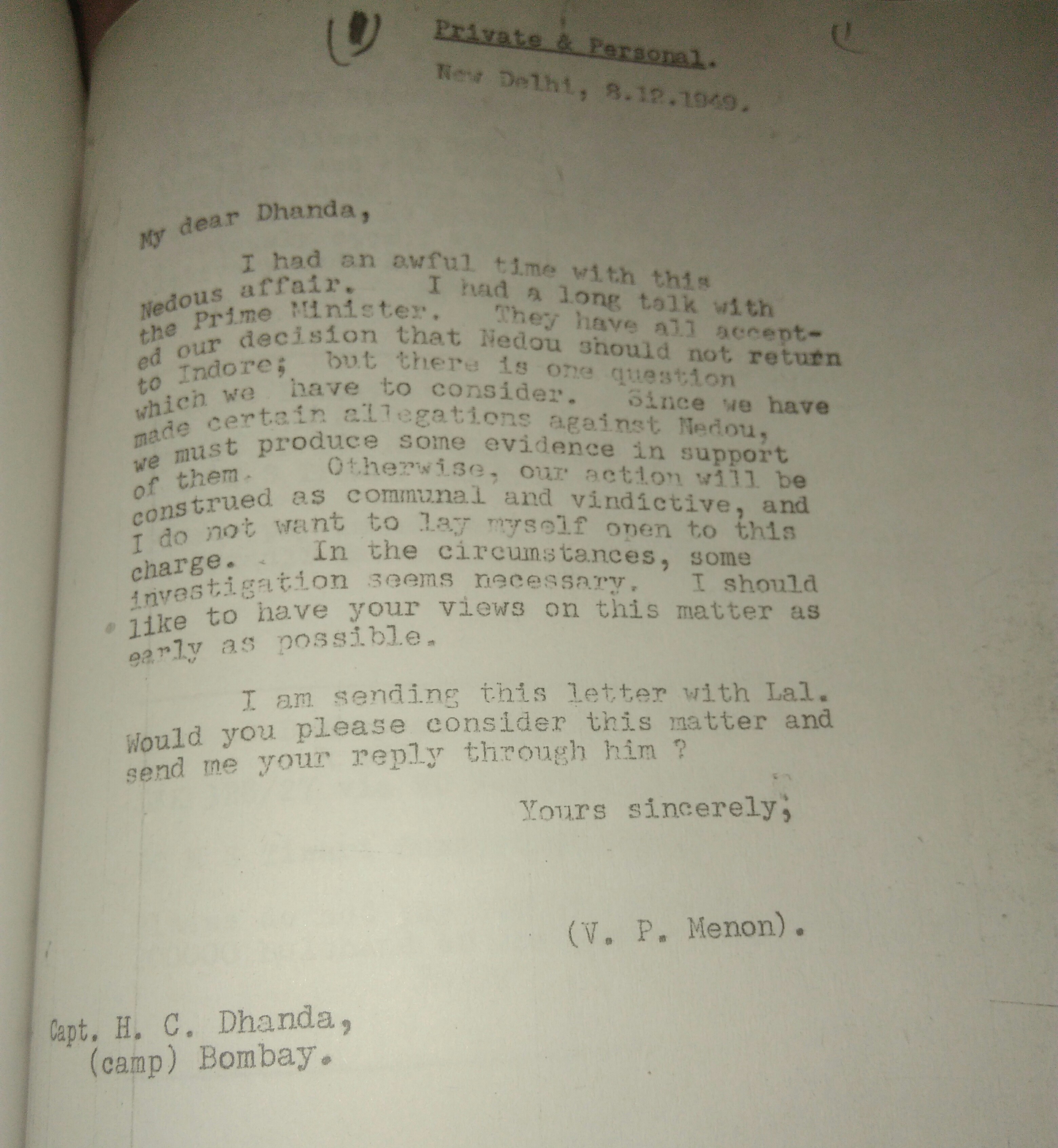 Correspondence by V P Menon stating his awful experience with Nedou affair.
Correspondence by V P Menon stating his awful experience with Nedou affair.
As there was no criminal case against Nedou already, it was decided that further action might not be taken. But still the suspicion was lingering within the Indian Govt due to the presence of strong evidence against Nedou. Indian Govt discussed the matter with Sk Abdullah about the fate of Nedou. He insisted that Indian Govt should come clean about the suspicions and allegations made against Nedou and give him a clean chit. He suggested that 3 steps can be taken – Ministry of States informs Nedou of the situation officially, Nedou informs HH about the changing situation and finally offer HH his resignation as private secretary. Sk Abdullah also insisted that Nedou should be given a onetime large capital as pension and his belongings in Indore should be returned to him in Srinagar.
Nehru agreed upon the ‘compromises’ set by Sheikh Abdullah but Nehru had reservations in trusting HH Yeshwantrao Holkar. Nehru had insisted that Harry Nedou should be confronted in person. As a result, Harry Nedou was confronted by Ministry of States. In the face to face confrontation, Harry Nedou accepted that he had passed over jewels of Holkar royal family to Harry Winston but everything he did was under the order of his boss HH Yeshwantrao Holkar.
-1.jpg) Correspondence of Nehru on Harry Nedou.
Correspondence of Nehru on Harry Nedou.
Rumors about Harry Nedou were too intense in Indore which already had the Indore public agitated against him. Then he was also grilled of the fact that Harry Nedou was trying to brain wash HH Yeshwantrao Holkar to marry off his daughter Princess Usha to Nedou’s brother and influence Yeshwantrao to purchase a plane in Nedou’s name. Nedou denied all the allegations. From the entire grilling, it was clear, that it will be HH Yeshwantrao Holkar who will be legally in trouble if any legal action is taken against Nedou.
It was decided that Nedou will be giving resignation from his post and his belongings in Indore will be sent off to Kashmir. Indian Govt camp in Indore invited Nedou’s brother and a friend to collect Nedou’s belongings from Indore which was packed off in 26 trunks in a truck brought from Kashmir by Nedou’s brother. On the specific day, Mr Lal from Camp Indore from Indian Govt invited the brother and friend of Harry Nedou for tea and dinner but they refused it on pretext of some work. But later Indian Govt got to know that they had accepted a dinner invitation by Maharani of Indore which they attended instead. This clearly indicated the hypocrisy within the Nedou camp. Hence Nedou was literally given a safe passage.
The last blockage in arresting Nedou was the letter between Yeshwantrao Holkar and Winston where he literally accepts of selling the 3 particular Indore jewels claimed by Tukojirao Holkar as his private jewels. Though the claim of Tukojirao Holkar was not entertained by the Indian Govt, but the case involving the Harry Nedou in the entire jewelry heist was closed keeping in mind about the dignity and prestige of the Indore royal family and to some extent the recent attack on Kashmir by newly formed Pakistan as of 1948.
Regarding the ownership of the jewels, the confusion stayed until Princess Usha Trust was formed in 1952.
